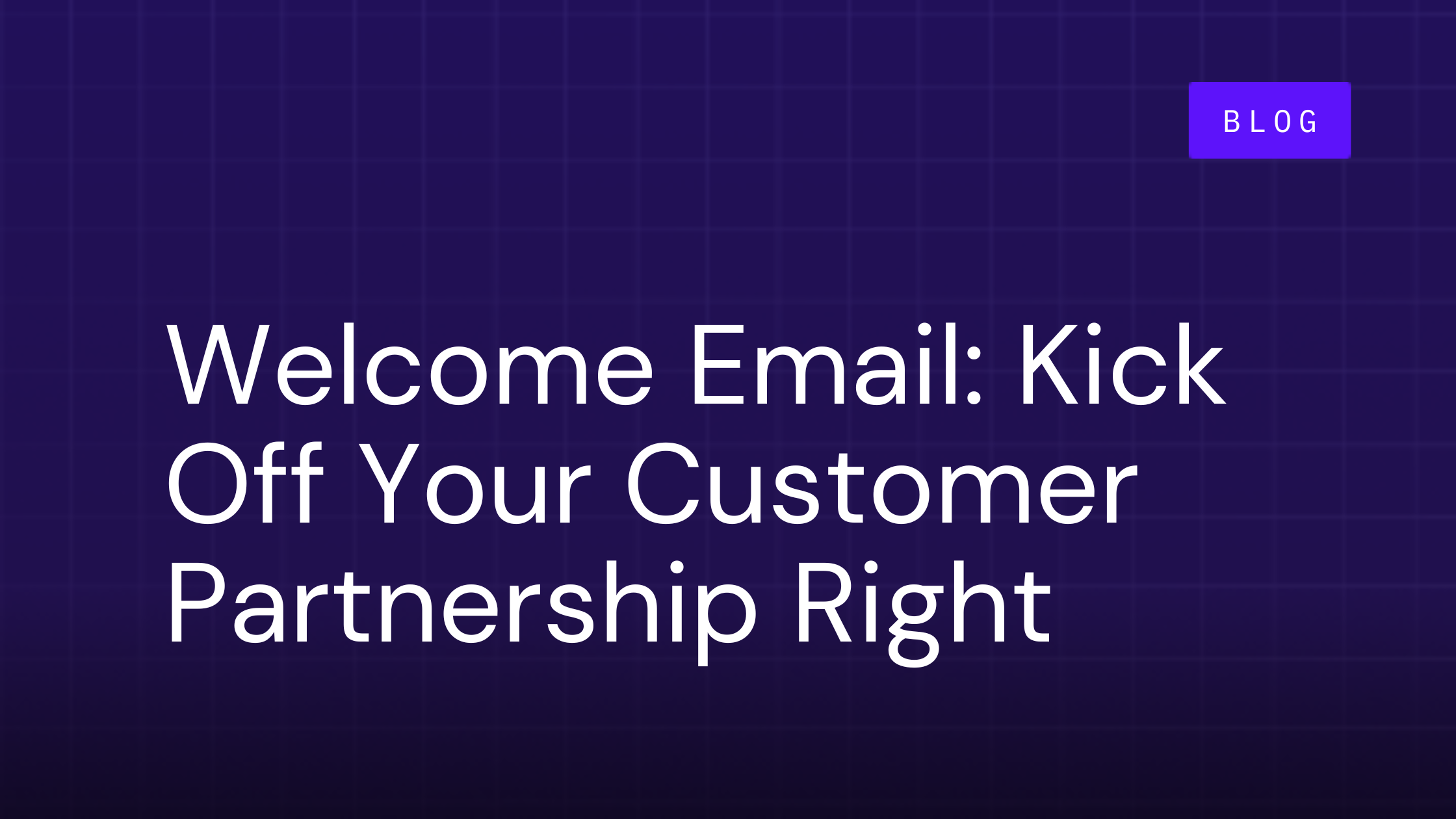After all, it’s the first onboarding communication you have with them. Like all first impressions, what you say and how you say it could make the difference between whether or not your customer is ready to roll — or feels the dreaded pangs of a serious case of buyer’s regret.
Strike the right balance of professionalism, power, and pizzazz and — more importantly — keep your customer stoked about your new business partnership with a concise, informative intro email.
First Paragraph: Less. Is. More.
Before you tap a single key, remember: Concise emails are preferred to overly complicated word dumps.
Most professionals spend 28% of their workday plodding through emails. So instead of burdening your customer with a manifesto, focus on the important and immediate next steps. Hopefully, this will be a long relationship — you don’t need to spill everything in the first message.
This is simply your opportunity to be welcoming and enthusiastic, so briefly introduce yourself (again, if necessary). Mention your role and that you’re thrilled to get started. Let them know that you're committed to making sure they’re successful with your company or product.
Second Paragraph: State Immediate Next Steps
The second paragraph is the perfect place to schedule a kickoff call. For example, you could offer up a HubSpot or Calendly link so your customer can set up the meeting. Or you might want to suggest three times (using the customer’s time zone) that work for you.
Feel free to request that the customer agree to a kickoff call or respond by a specific date. That way, you can put a reminder in your to-do list to follow up if the customer hasn’t taken any steps.
Third Paragraph: Give the Framework of Your Onboarding Plan and Go-Live Date
Save yourself from inserting an entire project plan in an email by using a tool like OnRamp to link to the customer’s specific onboarding project. Call out the items you want them to complete before the kickoff call. Alternatively, if your customer gets (or already has) immediate access and a login, ask them to sign in to your platform. The OnRamp in-app widget will pop up with the onboarding plan attached automatically when they do.
Also, affirm a go-live date even if one wasn't decided during the sales process. Call out and provide solutions for any foreseeable “land mines,” like that vacation to Miami, technical blockers, or just customer concerns that bubbled up during the sales journey.
P.S. Stands for Personality
Depending on your business and customers, you might want to include a less formal P.S. to close out your intro.
Being more human can start your customer relationship on a more personalized note, and at the end of the day, people want to work with people they like! This can be something casual, like a picture of your pet as a closing salutation. Or maybe you have a cool picture you took while you visited the city your customer is based in. Even a GIF could show some personality.
But if this isn't your style (or it's not appropriate), don't force it.
Review Your Email and Check It Twice — or 3 Times
Easy. To. Read. That’s the name of the game. No more than three sections and three immediate next steps. Otherwise, you might end up in a situation that happened to me with a customer: Three weeks of radio silence. Although good-natured, the customer finally explained: “You made me read a novel. I usually only read those on vacation.”
Bottom line: If something doesn’t seem like it should be included (like mentions of other team members, a kickoff call deck, or a bunch of additional collateral), save it for a later thread. It's highly unlikely that a customer will complain that you sent an intro email that was too succinct.
Customer partnerships have a few milestone markers that require special attention, the first of which is the intro email. It'll take a little word economy on your part, but if all goes well, you’ll have tons of other chances to interact and build a rewarding business partnership with your newest customer.

